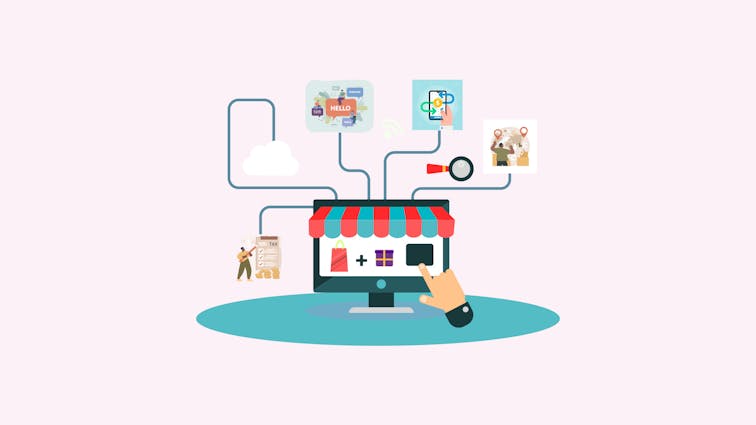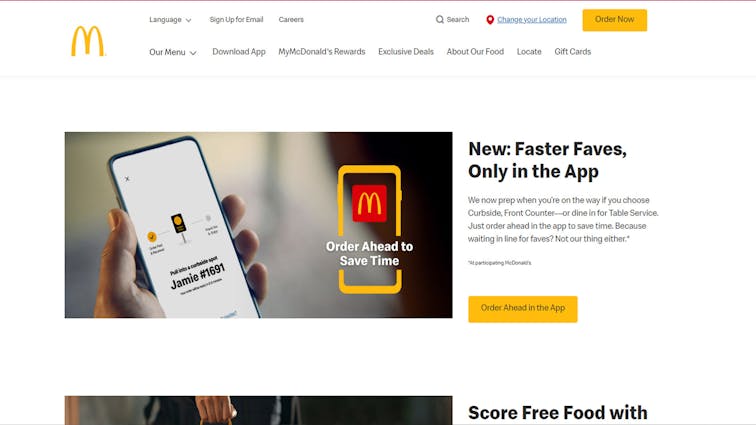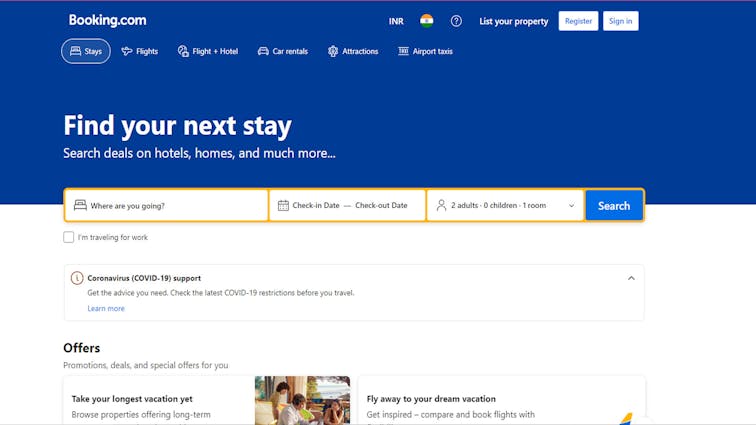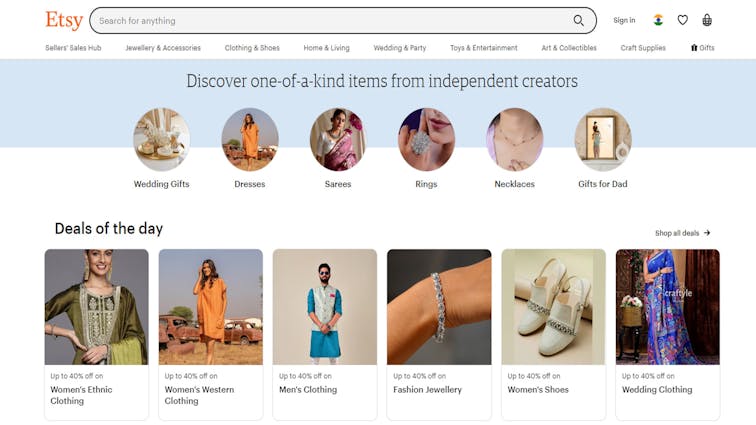
Headless Commerce Localization: Why Localizing Your E-Commerce Platform Matters
Looking for ways to revolutionize your online business? Want to stand out from the crowd and offer a unique shopping experience to your customers?
Ever thought about the potential of Headless Commerce Localization?
Intrigued by the term but not sure what it means?
Curious about how this modern approach to ecommerce can help you cater to a global audience more effectively?
Stay tuned as we delve deeper into the world of Headless Commerce Localization, exploring its benefits, how it compares to traditional commerce, and how it can help you build a truly global ecommerce brand.
What is Headless Commerce Localization?

Headless commerce localization is the process of adapting your e-commerce platform to fit the needs of different regions and cultures.
It involves translating content, accepting local currencies, and adapting to local regulations.
Headless commerce refers to a new approach to e-commerce where the front-end customer experience is decoupled from the back-end functionality.
This approach allows for greater flexibility in customizing how your website looks and feels for each individual market.
The Importance of Localization in E-Commerce
Localization plays a crucial role in the success of any global e-commerce strategy.
By creating a localized shopping experience, you can build trust with customers and improve their overall shopping experience.
When customers feel that your site understands their unique needs, they are more likely to make a purchase. One key factor in localization is language support.
In many cases, customers prefer to shop in their native language, so it’s important to have accurate translations on your website.
Currency support is another important consideration, as it allows customers to see prices listed in their own currency without having to perform conversions themselves.
Another critical aspect of localization is understanding regional laws and regulations. Different countries have different rules regarding tax compliance and shipping regulations, which can impact how you conduct business online.
By offering localized shipping options with reasonable delivery times, you can enhance customers trust in your brand by delivering quickly with no hassle or surprise fees during checkout.
In short - if you’re looking for success in global markets through e-commerce platforms like Aasaan, Shopify or Big Commerce - then localization should be a top priority!
Headless Commerce Localization Overview

What is headless commerce?
Headless commerce refers to an e-commerce architecture where the front-end and back-end of the website are decoupled from each other.
This means that the website’s user interface (UI) and user experience (UX) layer are separated from the e-commerce engine, which handles all the business logic such as inventory management, order processing, and payment processing.
With a headless approach, developers have more flexibility in designing custom UI/UX experiences that can be delivered through various channels like web, mobile apps, social media platforms, or even IoT devices.
How does headless commerce enable localization?
The separation of front-end and back-end layers in headless commerce makes it easier to implement localization strategies.
Instead of managing multiple localized websites with different codebases for each language or region, companies can use a single back-end e-commerce engine while delivering localized content through custom front-ends.
For example, a company with customers in both Japan and France could create two separate front-ends that are optimized for each region’s language and cultural preferences while using the same backend system to manage inventory and order fulfilment.
Furthermore, since customizations can be made at either layer without affecting the other layer of the website’s architecture significantly; developers can easily make changes to a specific locale without worrying about breaking or altering site functionality in other regions.
Benefits of headless commerce localization
Headless commerce localization offers numerous benefits over traditional e-commerce architectures that require multiple codebases for different languages or regions. Here are some benefits:
- Better customer experience: Localizing your e-commerce store enhances customer engagement by providing personalized experiences tailored to their needs.
- Easier maintenance: With one single backend system handling all inventory management, order processing tasks becomes more streamlined across all markets.
- Enhanced flexibility: With a headless commerce architecture, businesses have more flexibility to create custom front-end experiences that are tailored to the needs of each region or language.
- Faster time-to-market: Headless commerce localization can reduce the time required to launch new markets and support different languages since developers can focus on building localized front-ends rather than rewriting backend code.
Headless commerce localization offers businesses an efficient way to manage e-commerce stores across multiple regions and languages while providing better customer experiences and reducing complexity in managing their online business.
Key Components of Headless Commerce Localization

1. Translation and language support
When it comes to localization, translation is one of the most crucial aspects. It allows businesses to communicate effectively with their customers in different markets.
In headless commerce, translation is made easier by separating the front-end and back-end systems.
This means that businesses can easily translate their product descriptions, site content, and other information into different languages without affecting the functionality of their website.
But it’s not just about translating words. Understanding cultural nuances is also important when localizing your e-commerce site.
For example, colors can have different meanings in different cultures while red is associated with passion in Western countries, it’s seen as a symbol of luck in China. Paying attention to these details can help your brand connect better with local customers.
2. Currency and payment options
When expanding your business globally, it’s important to make sure that you offer local payment options for your customers.
Different countries have different preferences when it comes to payment methods some prefer credit cards while others prefer bank transfers or cash on delivery.
In headless commerce, you have the flexibility to integrate with multiple payment gateways and offer a variety of currencies to your customers.
This enables them to pay in their preferred method and currency, eliminating any friction points that might prevent them from completing the purchase.
3. Shipping and fulfillment options
Shipping can be a complex process when going global due to varying regulations across different regions.
What’s more, customer expectations around shipping times vary depending on cultural norms some expect fast delivery times while others are more patient.
To meet these expectations effectively, headless commerce systems allow businesses to integrate shipping carriers that are specific to each region they operate in.
By offering a range of shipping options based on location (e.g., same-day delivery in urban areas), brands can ensure they meet the expectations of local customers.
4. Tax compliance and regulations
When selling globally, businesses must comply with a range of tax laws and regulations across different regions. This can be especially challenging for small businesses with limited resources.
Fortunately, headless commerce systems can help make this process much easier by enabling businesses to automatically calculate taxes based on the customer’s location and the product being sold.
It also allows them to apply different tax rates based on the region in which they are selling, keeping them in compliance with local regulations.
Having a well-designed headless commerce localization strategy is essential for businesses looking to expand globally.
By paying attention to translation, payment options, shipping and fulfillment, and tax compliance issues brands can create better experiences for their customers while minimizing friction points throughout the shopping experience.
Best Practices for Headless Commerce Localization

1. Conducting Market Research: Understanding Your Target Audience
The first essential step in localization is conducting thorough market research to fully understand the target audience in each specific region.
This research should include reviewing data on demographics, online shopping habits, and preferred payment methods.
It’s also important to consider cultural differences that affect buying behavior, such as holidays or local customs.
A deep understanding of these factors will allow for tailoring the e-commerce experience to match the unique needs of customers in each region.
2. Adapting to Cultural Differences: Avoiding Cultural Insensitivity
Cultural sensitivity is a fundamental aspect of localization that should never be overlooked.
Understanding social norms and traditions is crucial when adapting an e-commerce site to a particular culture.
You need to be aware of taboos or any cultural nuances that must be considered carefully during website design.
For example, what may be perceived as an appropriate color scheme in one country could be offensive in another.
Therefore, it’s always best to work with local experts or hire professional consultants who can provide valuable insight and avoid any potential pitfalls.
3. Leveraging Local Partnerships: Building Trust through Authenticity
Establishing trust with your customers is vital when expanding into new markets and regions.
One way to build trust quickly is by partnering with local businesses or influencers who are already established within the community you’re targeting.
These partnerships can provide valuable connections and insights into consumer behavior and preferences that are difficult for outside companies to obtain on their own.
Another way businesses can leverage local partnerships is by aligning themselves with causes or initiatives important within the community they’re operating in - whether it’s supporting small business owners or participating in social responsibility programs aimed at improving people’s lives.
4. Testing and Optimizing Localized Experiences: Continuous Improvement & Feedback Loop
After localization, it’s important to test and optimize localized experiences continually.
Conducting A/B testing on localized sites to measure the impact of changes to the design, content, and user interface can provide valuable data on what is working well and what needs improvement.
It’s important to analyze feedback from customers throughout this process, as their insights can help guide future changes and ensure that your e-commerce site meets the needs of consumers in each specific region.
Implementing best practices for headless commerce localization involves conducting thorough market research, adapting e-commerce websites to cultural differences through sensitivity training and building trust through local partnerships and engagement.
Following these best practices will help businesses create a powerful local presence that resonates with consumers in specific regions while providing a seamless experience across borders.
Challenges of Headless Commerce Localization Technical Complexities
1. Technical Complexities
Implementing Headless Commerce Localization can be a technically complex process.
It involves developing and maintaining multiple websites for different regions, each with its own content, functionality, design, and customer experience.
This can be time-consuming and resource-intensive.
Additionally, integrating third-party tools for translation services, currency conversion, tax compliance, and more requires technical expertise to ensure seamless operation.
2. Managing Multiple Localized Sites
With Headless Commerce Localization, you’re not just managing one online store, but multiple localized sites.
This means constantly updating product catalogs, adjusting pricing for different locations, and ensuring a consistent brand message across all sites.
To manage this effectively, businesses need robust Content Management Systems (CMS) capable of handling multiple sites from a single dashboard.
3. Balancing Global vs Local Branding
As you expand globally, maintaining your brand identity can become challenging. You need to strike a balance between your global branding efforts and localizing your offerings to suit different regions.
This involves developing a localized content strategy that effectively communicates your brand’s values and mission while remaining relevant to different regions.
Implementing a well-structured, comprehensive localization strategy will enable businesses to strike the perfect balance between global branding efforts and local relevance.
Headless commerce localization offers several benefits, but it is not without its fair share of challenges.
Successfully implementing such strategies requires companies to overcome technical complexities, manage multiple localized sites effectively while striking a balance between global branding efforts and local relevance.
By keeping these challenges in mind, businesses can develop customized solutions that cater to their specific needs and create an engaging customer experience across all regions they serve.
Case Studies: Successful Implementations of Headless Commerce Localization

Localized Experiences that Drive Engagement and Sales
In the global marketplace of today, the ability to cater to local markets is not just beneficial, but crucial for success.
Brands that adapt their online presence to meet the unique needs of each region they serve are the ones that truly thrive.
Let’s explore how some companies have successfully implemented headless commerce localization strategies to drive engagement and sales.
1. IKEA: Tailoring Product Offerings to Local Preferences
IKEA, the Swedish furniture retailer, is a prime example of successful localization. They’ve customized their product pages and home decor ideas to cater to specific regions.
For instance, their Japanese website offers products that fit smaller living spaces and showcases traditional Japanese decor styles.
This tailored approach to product offerings and design elements has led to increased customer engagement, satisfaction, and sales.
2. Nike: Localizing Payment Options and Campaigns
Nike’s success in localizing its e-commerce site in China is another testament to the power of localization.
They incorporated local payment options like Alipay and WeChat Pay, enhancing the checkout experience for Chinese consumers.
Additionally, they launched Chinese New Year campaigns offering special discounts on popular products during this significant holiday season. This localized approach has driven engagement and boosted sales.
In conclusion, creating localized experiences that resonate with regional preferences can significantly drive engagement and sales.
Companies like IKEA and Nike have demonstrated the power of headless commerce localization in achieving this.
As we move forward in the global marketplace, the ability to adapt and cater to local markets will continue to be a key driver of success.
Localization Strategies within Different Industries
In the diverse world of global business, different industries require unique localization strategies, tailored to specific cultural norms or financial regulations within each market.
Let’s explore how some companies from various industries have successfully implemented headless commerce localization strategies.
1. McDonald’s: Adapting Menu to Regional Preferences

McDonald’s, the fast-food giant, has successfully localized its menu to cater to regional preferences.
In India, where beef consumption is less common due to religious beliefs, McDonald’s introduced the McAloo Tikki burger, a potato-based alternative to the traditional beef burger. This adaptation to local tastes has been a key factor in their success in the region.
2. Booking.com: Localized Content and Customized Recommendations

Booking.com, the travel booking site, offers localized content with customized travel recommendations based on user location data.
They display hotel deals with prices in the local currency, providing a more personalized and user-friendly experience for their customers.
3. Etsy: Language and Payment Localization

Etsy, a global marketplace for handmade goods, has localized its site in 10 different languages to cater to international buyers.
Their localization strategy extends beyond language support, including payment options that are specific to certain regions, making the buying process easier and more convenient for their customers.
The Importance of Local Partnerships
In the journey towards global business success, establishing local partnerships can play a pivotal role.
These alliances can help businesses navigate cultural differences and regulations while entering new markets.
Let’s delve into some examples of how companies have leveraged local partnerships to enhance their headless commerce localization strategies.
1. Zara: Partnering with Local E-commerce Platforms

Zara, a popular Spanish fashion retailer, has made a significant impact in the Chinese market by partnering with the local e-commerce platform, Tmall.
This partnership allowed Zara to tap into Tmall’s existing customer base and leverage their marketing capabilities, thereby driving engagement and sales.
2. Netflix: Collaborating with Local Broadcasters

Netflix, the global streaming giant, has localized its content offerings based on regional preferences.
In Poland, Netflix partnered with local broadcaster TVN to fund their original series, produced exclusively for Netflix Poland viewers.
This partnership not only catered to the local audience’s preferences but also drove engagement and subscriptions.
The Future of Headless Commerce Localization
The world of e-commerce is constantly evolving, and the future of headless commerce localization is no exception.
As we look ahead, two key areas stand out: the role of AI in personalized localization experiences and the emergence of new technologies for seamless cross-border transactions.
1. The Role of AI in Personalized Localization Experiences
Artificial Intelligence (AI) has been a buzzword in the e-commerce industry for years, but its potential for providing personalized localization experiences is only now being fully realized.
AI-powered algorithms can analyze consumer behavior and preferences, allowing companies to offer customized content, product recommendations, and promotions tailored to each user’s unique needs.
One area where AI is making a significant impact is language translation. Some companies are now using AI-powered translation software to quickly and accurately translate content into multiple languages, ensuring consistency across all localized sites.
Another exciting application of AI is the analysis of social media data to understand local trends and preferences. By analyzing social media posts and interactions, companies can tailor their marketing strategies to better resonate with each target audience.
As AI technology continues to evolve, we can expect even more advanced personalized localization experiences in the future.
2. Emerging Technologies for Seamless Cross-Border Transactions
As global commerce continues to grow, so does the need for seamless cross-border transactions. Emerging technologies like blockchain and augmented reality (AR) are making this process easier than ever before.
Blockchain technology, for instance, can streamline cross-border payments, bypassing traditional financial institutions and eliminating costly fees associated with international money transfers.
AR, on the other hand, can create immersive shopping experiences that bridge geographic barriers. With AR-enabled mobile devices becoming increasingly popular, retailers can use this technology to engage customers in new and exciting ways.
Machine learning algorithms are also being utilized to optimize logistics and reduce shipping times. By analyzing data such as order history, location, and weather patterns, these algorithms can determine the most efficient delivery routes in real-time.
In conclusion, the future of headless commerce localization is bright, with AI and emerging technologies paving the way for more personalized and seamless cross-border e-commerce experiences.
The Future is Localized!
Recap on the importance and benefits of headless commerce localization
Headless Commerce Localization is an essential aspect of e-commerce that shouldn’t be overlooked.
The importance of localizing your e-commerce business can’t be overstated in a world where customers’ preferences are continually changing.
In this article, we’ve explored why headless commerce localization is crucial for any e-commerce business looking to expand globally.
By enabling localization, businesses can cater to the needs of their global customer base. This allows them to connect with customers on a personal level, leading to increased customer loyalty and satisfaction.
With headless commerce localization, businesses can address cultural differences such as language barriers, payment options, shipping options, tax compliance and regulations.
One benefit of Headless Commerce Localization is better conversion rates- it’s easier for customers to interact with a website when they can relate to its language and cultural context.
A localized website ensures that all potential issues associated with language barriers are eliminated.
Another benefit is the opportunity for businesses to expand globally- by using Headless Commerce Localization strategies like market research, adapting content to accommodate cultural differences and leveraging local partnerships/global branding strategies you can ensure successful expansion into foreign markets.
With the increasing use of mobile phones worldwide comes another benefit - mobile optimization through localization. By customizing their website’s user experience based on location including different languages or time zones businesses stand out from competitors who have not implemented these features.
It’s worth noting that while Headless Commerce Localization presents a significant opportunity for companies looking for global growth prospects; it also poses unique challenges like managing multiple localized sites or balancing global versus local branding.
These challenges should not deter companies from pursuing a localized approach. Headless Commerce Localization continues to become more important as online shopping becomes more prevalent across cultures around the globe.
By tailoring an online shopping experience that considers unique cultural and regional differences, businesses can establish loyal customers and higher conversion rates.
The future of e-commerce is localized, and we should all embrace this trend to ensure global success in the years to come.
FAQ’s:
1. What is a headless commerce approach?
A headless commerce approach is a setup where the front-end (presentation layer) and back-end (commerce engine) of an e-commerce platform are decoupled. This allows for greater flexibility and customization, enabling businesses to deliver unique customer experiences across various touchpoints.
2. What is e-commerce localization?
E-commerce localization involves adapting an e-commerce website to meet the language, cultural, and other requirements of a specific target market. This includes translating content, adjusting pricing and payment methods, and complying with local regulations.
3. What is a headless commerce stack?
A headless commerce stack refers to the combination of technologies used in a headless commerce setup. This typically includes a content management system (CMS), e-commerce platform, and other tools for managing customer data, payments, and other aspects of the online shopping experience.
4. How do you build headless commerce?
Building headless commerce involves decoupling the front-end and back-end of your e-commerce platform. This usually requires a team of developers to implement APIs that allow the front-end and back-end to communicate, and to create a customized front-end experience.








